Subaru Impreza RS vs Toyota Corolla Hatchback XSE Comparison

Hatchbacks: they’re like SUVs, just better—in ways.
The shape is hugely practical, so we were happy to see Subaru switch up to only the five-foor form for the latest version of the Impreza. Not only that, the brand brought back the RS badge, signalling a return of a sporty-ish Impreza for the first time since the WRX became its own thing.
It had been a while since we experienced the Toyota Corolla hatchback too—well, outside of the laugh-a-minute GR Corolla. With its own round of updates last year, we were eager to see how this front-drive hatch faired against its all-wheel-drive competitor. Managing editor Mike Schlee and I spent a week in these two red—but not red-hot—hatchbacks to see which was the smarter buy.
Interior and Cargo Space
Subaru Impreza: The Impreza doesn’t stray far from the traditional Subaru cabin design of the last decade. It’s a fine if unexciting space; the most daring bit of design is the diagonal split of materials on the center console. The dashboard has been designed around that larger 11.6-inch touchscreen, which we’ll talk about in more detail later.
Don’t let the lashings of red on the seats fool you: with a flat cushion and small bolsters, these are hardly sport seats. That’s not a knock, mind you: these are still comfortable, and the driver's seat is happily power-adjustable across a wide range.
One thing is clear right away: the Impreza is essentially a half-size up from the Corolla. Front headroom and legroom are close, but everywhere else, the Subaru is the clear leader. This is especially true in the back, where its 36.5 inches of legroom is over half a foot more than the tight Toyota. That being said, the rear entry point is still pinched with a narrow lower opening and thick sill.
The Subaru wins the cargo space race, too: 20.4 cubic feet beats 17.8 cubes. Neither has a flat floor with its seats folded down, but the Subaru gets closer, and has the cleaner floor shape to boot. It’s a shame that the tailgate release button feels so insubstantial; I constantly thought it wasn’t actually latched.
Toyota Corolla: The Corolla cabin has stayed largely unchanged since it debuted for 2019. It’s a simpler, higher-quality space than that of the Impreza, though some way shy of the segment-leading Mazda3 and Honda Civic. That’s a lot of unadorned dashboard ahead of the passenger—but we appreciate how tightly grouped all the controls are just below the screen. Well, except the tucked-away seat heat controls, and the annoyingly hidden USB port on the underside of the dashboard.
For me, the Corolla’s split-material seats are the winners of this face-off, with just a little more cushion and support than the harder thrones in the Impreza. That’s the case for the front pair, anyway.
The Corolla’s lack of space is apparent early on, in its smaller center console storage and door bins. Then you get into the back and wonder if Toyota forgot which segment it was targeting. 29.9 inches of rear legroom? No amount of seat comfort can make up for that. Those enormous front seats are at least part of the problem: why are they so thick, anyway?
Pop the tailgate and the small feeling continues. The Corolla has less actual storage room than the Impreza, plus a more pronounced lip to clear to access it. That it actually feels closed when it’s closed is a small consolation.
Bottom Line: The Corolla has a slight material quality edge and the better front seats, but the more spacious Impreza shades it in every other way.
Subaru Impreza vs Toyota Corolla: Tech and Features
Impreza: The Subaru’s infotainment system certainly has the size advantage, its portrait-orientation 11.6-inch screen offering almost 50-percent more real estate. The tweaks the brand has made to its responsiveness, as well as the wireless Apple CarPlay and Android Auto, are welcome.
When it works, anyway. The RS refused to pair fully with my iPhone 15, and its device menu also glitched out, so I couldn’t delete it and try again. Not even an immediate power cycle fixed the issue; only on the next day did it right itself. The menu design still looks right out of the Windows XP era, too.
Other bits of the Impreza experience are better. I appreciate the button-festooned steering wheel, which allows the driver to control nearly everything without taking their hands off the wheel. Subaru’s commitment to tallying just how much fuel the start-stop system is saving is commendable. After a little over half an hour of sitting at stops across the week, the Impreza had saved a liter of fuel.
Subaru’s Eye Sight suite of driver assists is both thorough and easy to use. Its adaptive cruise control is slightly more cautious than the system in the Corolla, but otherwise works as advertised.
Corolla: Toyota’s latest infotainment system is very easy to use, with just a handful of main menu controls along the left side of the screen. This tester includes navigation, something unavailable on the Impreza—but it’s tied to a subscription. Like the Scoob, the Toyota provides wireless phone mirroring, and we had no issues with it. The wireless charger, meanwhile, was inconsistent in its operation.
The 8.0-inch screen is smaller but in most situations that’s not a problem. The exception is satellite radio, where the screen can become cramped and awkward to navigate, especially without a tuning knob.
Toyota Safety Sense 3.0 goes point-for-point with EyeSight, delivering a welcome and robust lineup of consistent safety features like blind spot monitoring, rear cross-traffic alert, and more. The Corolla’s backup camera is inferior though, in both resolution and function, as its guidelines are not dynamic.
Bottom Line: This is a pretty well-matched category: the Subaru’s infotainment is larger but uglier and prone to glitches, while the Toyota’s smaller screen works without hiccups. Both vehicles provide plenty of standard driver and safety assists too, making this a draw.
Powertrain, Driving Feel, and Efficiency
Impreza: With the return of the RS badge, the Impreza finally features Subaru’s larger 2.5-liter Boxer four-cylinder again. With an extra half-liter of displacement over the Toyota, the Impreza boasts a higher 182 horsepower and 178 pound-feet of torque. The power routes to all four wheels via a continuously variable transmission.
The trade-off here is a higher curb weight, as the Subaru checks in at 3,275 pounds (1,486 kilograms). In dry situations there’s no discernible advantage off the line in the Impreza. The additional torque makes itself known more in the mid-range around town, where the Subaru is the more assertive hatchback. The advantage remains—if diminished—on the highway, where the Subaru needs less revs to access the meat of its powerband.
Steering feel is of the popcorn variety: light and airy. Despite this, the Impreza rides with a heavy-footed feel, like it’s been forced to wear winter boots two sizes too big. This becomes less noticeable on the highway, where its size and weight works in the Impreza’s favor. Yet around town, the Scooby is hesitant and truculent.
It sure is thirsty, too. While the official EPA/NRCan figures aren’t too far off those of the Corolla, over the week the Impreza saw consumption rates some 40-percent higher than the Toyota. We’re talking just 20.2 mpg (11.6 L/100 km).
Corolla: All Corolla hatchbacks come with the same 2.0-liter engine. Its 169 hp and 151 lb-ft can’t match the Subaru, but the Corolla hauls around much less weight (3,060 lb / 1,388 kg). It too uses a CVT, but Toyota fits a physical first gear for smoother take-offs. The hand-off is seamless, yet all but eliminates that rubber-bandy feel you’ll get off the line in the Subaru. Up at highway speeds, the Corolla does need a heavier foot to make passes.
Since the front axle doesn’t need to deal with applying both power and steering, the Corolla benefits from a sharper, more responsive steering feel. There’s still not a lot of feedback, but it’s an altogether more inspiring and—whisper it—fun experience. Those big 18-inch wheels don’t love sharper bumps though, sending a dull thud through the cabin. The rest of the ride is quite smooth however, and body motions are well-controlled through corners.
The front-drive Corolla has the edge on fuel economy, both real and on-paper. We saw around 28.7 mpg (8.2 L/100 km) over the week—hey, it’s winter.
Bottom Line: It might be down on power, but the Corolla doesn’t feel it in most situations. That it’s lighter and more enjoyable to drive, while also smoother-riding on the highway, gives the Toyota a slight advantage; its vastly better economy only extends that. The Subaru’s all-paw grip is appreciated in the winter, but the low ride height minimizes that strength.
Subaru Impreza vs Toyota Corolla: Styling
Impreza: In that way that only Subaru can pull off, the Impreza manages to look both new and like it’s been around for years already. Recognizably Subaru with the hexagonal grille and C-shaped taillights, the Impreza works best in this red. The large RS badges are probably overkill for a hatch that is only warm, not hot.
“It looks very similar on the outside to the model that first debut in 2017,” remarks Schlee. “But the more time I spent around it, I noticed just how much Subaru has cinched in the rear fenders, giving the vehicle a rounder posterior. The large taillights that protrude from the body only extenuate this.”
Corolla: Despite being one of the older models in this segment now, the Corolla hatchback is the looker of this pair. With the contrasting black roof, the Toyota looks low and sporting. Its 18-inch wheel design is the better of these two, and if we’re going to be forced into dark alloys, we’d rather these than the flat black of the Subaru’s. Tasteful lashings of chrome offer some much-needed contrast in the front and rear bumpers.
Bottom Line: Your tastes are your tastes when it comes to design. But for us, we both prefer the attractive Corolla.
Pricing and Value
Impreza: As equipped, our tester retails for $31,075 ($33,790 CAD), including destination. This reborn RS benefits from the power moonroof, power driver’s seat, and the 10-speaker Harman Kardon sound system; all included in Canada, but contributing an additional $2,070 to that final tally in the US. Unless you really can’t live without the power driver’s seat, we’d suggest skipping it.
Corolla: Toyota has quietly pruned the hatchback side of the Corolla family tree since its update last year. Just three trims exist now, and even this top-level XSE no longer offers features like a sunroof. The only extra contributor to the bottom line is the sharp two-tone exterior paint option. All in, this tester rings up at $28,825 ($33,035 CAD), including destination.
Bottom Line: Subaru Canada prices the Impreza very aggressively. It’s basically a PlayStation 5 more expensive than the Corolla in the Great White North. The optional kit in America puts it roughly eight-percent pricier than the Toyota, enough of a gap to pause for thought.
Subaru Impreza RS vs Toyota Corolla Hatchback XSE Comparison: Verdict
Putting on our rational hats, both Schlee and I agree that the Subaru is the better bang-for-buck choice. You get a lot more car for barely more money in terms of space, features, and of course driven wheels. You’ll be spending a lot more on gas, mind you.
Yet we both felt a draw to the humble Corolla hatch. “With the Corolla Hatchback, I was surprised how lively it is drive,” noted Schlee. “With vehicles getting so large, and compacts not being all that compact anymore, the Corolla Hatchback is a refreshing change. It’s small size and responsive controls reminds of fun-to-drive subcompacts of the past like the Mazda2, Suzuki Swift, and Ford Fiesta. It’s a shame the manual option is no more as that would really complete the package.”
If this is a one-car-for-all-things purchase, the Impreza is the one to get. A second car for the family, or one that will only rarely cram adults into the back? Don’t overlook the smile-inducing Corolla.
Become an AutoGuide insider. Get the latest from the automotive world first by subscribing to our newsletter here.

Kyle began his automotive obsession before he even started school, courtesy of a remote control Porsche and various LEGO sets. He later studied advertising and graphic design at Humber College, which led him to writing about cars (both real and digital). He is now a proud member of the Automobile Journalists Association of Canada (AJAC), where he was the Journalist of the Year runner-up for 2021.
More by Kyle Patrick



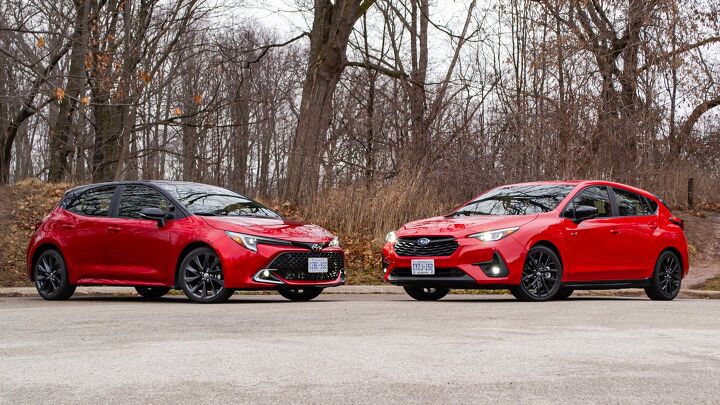
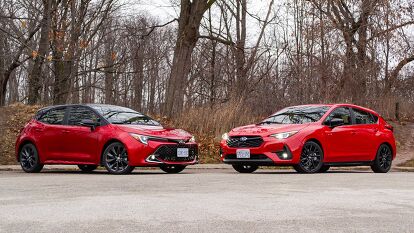

























































































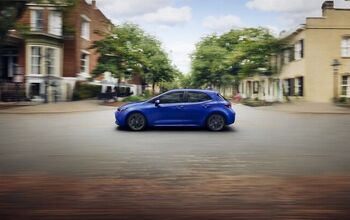

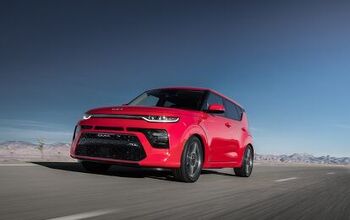


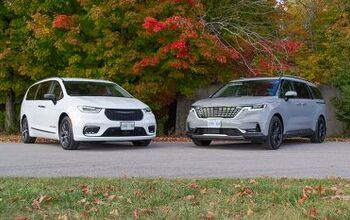
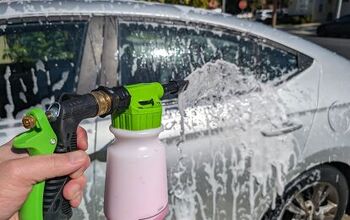




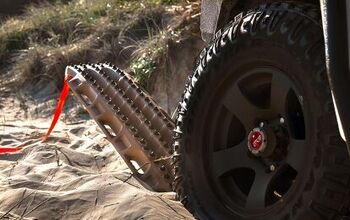
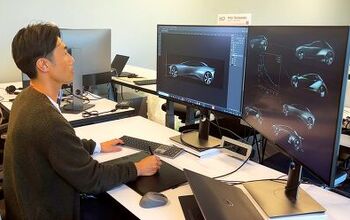

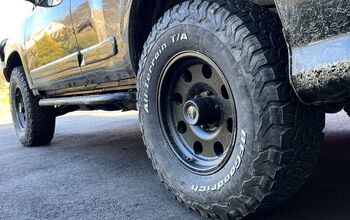
Comments
Join the conversation
Here we go again NOT choosing Toyotas in your comparisons. You should do follow up car comparisons in ten years to see what cars are dead and which ones are still running
AND...By the way, the Corolla Hatches NEVER offered a sunroof due to body integrity